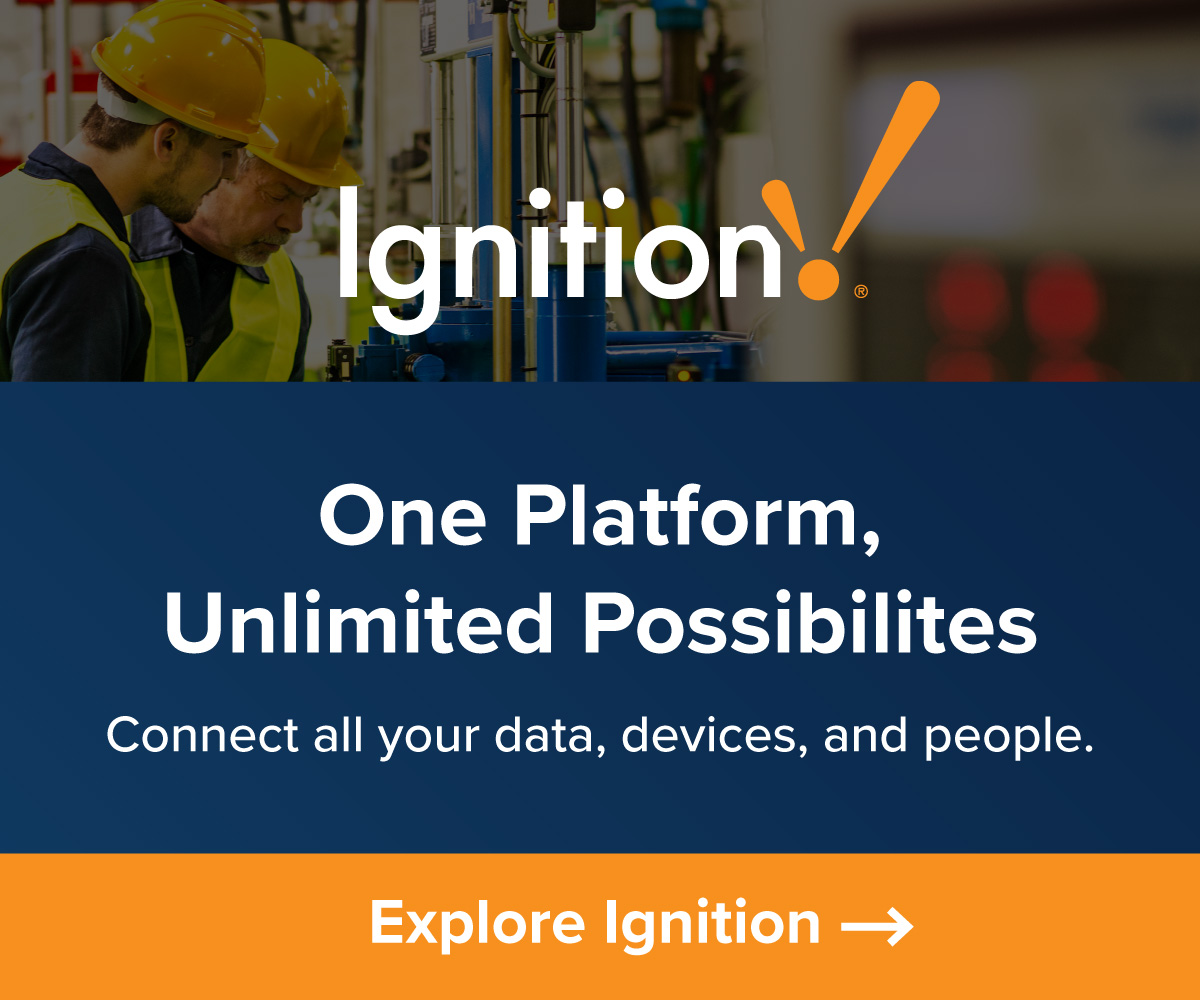by Gary Mintchell | Aug 7, 2025 | Networking, Wireless
I told Mehmet Yavuz, co-founder and CTO of Celona, that my contacts on LinkedIn had been discussing how 5G private networks had been a non-starter. And he was supposed to explain to me the benefits of a new private 5G solution.
He did.
The Celona solution, in brief, eliminates the cost and complexity of a cellular server-based private network. The Celona solution is an access point, similar to your WiFi access point, that plugs into the existing network switch. Think—5G field devices—>access point—>separate carrier from data—>data flows through existing network through a switch.
I like the idea. Since I can’t play with it, I can’t vouch for things like reliability. But to me a slimmer network approach should yield better performance.
From the press release:
Breakthrough architecture eliminates deployment complexity—without compromising security, performance or control
Yavuz explained that the company leadership came from a mix of cellular and industrial networking backgrounds. That shows in the structure of the solution.
Celona announced the launch and immediate availability of AerFlex—the industry’s first cloud-controlled, access point (AP)-only private 5G solution. Purpose-built to simplify and accelerate enterprise adoption, AerFlex eliminates the need for on-site servers and complex integrations, making it dramatically easier and more cost-effective to deploy high-performance, secure wireless networks. With Celona AerFlex, enterprises of all sizes can now leverage private 5G to unlock the full potential of industrial intelligence—empowering advanced automation, real-time decision-making and physical AI use cases.
No press release these days can avoid mentioning AI.
As AI-driven operations gain momentum across industrial sectors, the demand for reliable, high-performance wireless connectivity is accelerating. Private 5G is rapidly emerging as the preferred solution in environments such as refineries, manufacturing plants, warehouses, and mining operations—where traditional Wi-Fi often falls short.
With its game-changing architecture and cloud-native design, Celona AerFlex is the ideal foundation for industrial AI. By combining simplicity, speed and security in a fully integrated platform, AerFlex sets a new standard for enterprise connectivity—enabling faster deployments, lower total cost of ownership and unmatched operational agility.
Beta customer testamonial.
Celona beta customer Cargill, a global leader in food, agriculture, financial and industrial products and services, is testing Celona AerFlex to connect 20 satellite offices with its warehousing operations to streamline manufacturing processes, improve supply chain efficiency and automate forklifts used on its warehouse floor.
“Cargill operates over a thousand locations worldwide, many in remote or space-constrained environments where traditional infrastructure just doesn’t work,” said Robert Greiner, Director Platform Engineering for Customer, Commercial & Business Operations Digital Technology at Cargill. “Celona AerFlex gives us a secure, scalable private 5G solution that supports the growing role of AI and automation across our operations. Its innovative design and cloud-based management simplify deployment by eliminating the need for dedicated IT personnel at each location.”
Celona AerFlex is redefining private 5G by eliminating the complexity of traditional deployments. With an AP-only architecture, secure local data breakout, and cloud-based orchestration, AerFlex enables rapid rollouts—often in hours, not weeks. With its cloud-based control, AerFlex delivers centralized orchestration, built-in resiliency and scalability.
Unlike legacy telco solutions that retrofit complex infrastructure for enterprise use—or fragmented small cell systems that require multi-vendor integration—Celona AerFlex introduces a fundamentally different approach. By intelligently splitting network functions between Celona access points and the cloud and leveraging CelonaOS—the industry’s only unified private 5G operating system—AerFlex delivers seamless integration across radio, core and AI-powered management.
“Celona AerFlex marks a major leap forward in making private 5G truly accessible and operationally efficient for enterprises of all sizes,” said Rajeev Shah, CEO and co-founder of Celona. “By combining innovation with radical simplicity, we’re removing the traditional barriers to private 5G adoption—enabling more organizations to harness its performance, reliability, and security at a time when AI is transforming every industry.”
by Gary Mintchell | Jan 21, 2025 | Internet of Things, Sensors, Wireless
Following the “fieldbus wars” came the “wireless wars.” Bringing the entire automation and control community together for standards seemed to be The Impossible Dream. I predicted that the market would settle things, and it did.
Wireless sensors ushered in the Industrial Internet of Things era. One constant concern for engineers was powering the many sensors—many, or most, requiring batteries.
I didn’t have to attend CES to get news. I preferred the vacation in Australia and New Zealand we took instead of a crowded Las Vegas. This news comes from a company I’ve never heard of (always a joy).
G-Lyte to Introduce Sensitized Solar Cell Technology To Create a Durable Alternative to Disposable Batteries
(Aside: I take about 75 lbs. Of household batteries to recycling from our community every month. This keeps the toxic chemicals out of the landfill. Plus, companies really do recover the chemicals for reuse.)
Every day, consumers discard more than 72 million non-rechargable batteries contributing to high levels of toxicity that pose a serious risk to the environment while also needlessly driving up consumer prices. Recognizing this urgent need for alternative device powering solutions, G-Lyte has perfected their best-in-class, proprietary Dye Sensitized Solar Cell (DSSC) technology to create a durable, high-efficiency power source in low light environments that’s eco-friendly and 99%-plus recyclable.
Created as an embedded technology for product integration at the OEM level, G-Lyte is designed to power such products as computer accessories, remote controls, electronic shelf labels (ESLs), smart watches, trackers, sensors and more.
Manufactured for integration into both existing and new electronic devices, G-Lyte’s dynamic team of scientist-inventors work with product manufacturers at every level of the engineering process to evaluate their products’ power requirements and the prevailing lighting conditions in which the device will ultimately operate to first determine if the photovoltaic in-dye solution is, in fact, the best approach before deploying standard or custom sized and shaped products to power the device. G-Lyte also offers the only cell efficient in indoor conditions and stable under prolonged direct sun exposure.
by Gary Mintchell | Oct 28, 2024 | Automation, Edge, Industrial Computers, Networking, Wireless
- Expands the number of Nokia-owned and best-in-class industry applications integrated on the MX Industrial Edge (MXIE) to drive efficiency, productivity and OT security.
- New applications help to improve worker safety and enable responsive video for machine remote control, leading to higher operational efficiency and strengthening OT environment security.
I may not use a Nokia handset any longer, but the company still releases many products for industrial applications.
Nokia announced six new applications deployed on the Nokia MX Industrial Edge (MXIE) to help enterprises improve worker safety, site security, enhance operational efficiency and secure OT environments in manufacturing, mining, ports, and chemical industries.
In line with industry developments, Nokia MXIE on-premises edge solution, part of Nokia’s private wireless offering, supports ecosystem neutrality enabling the deployment of applications to help support growing diverse Industry 4.0 use case needs.
Offered as-a-service, these new applications are Ascom Ofelia, Fogsphere, innovaphone PBX & myApps, Nokia Real-time eXtended Reality Multimedia (RXRM), OneLayer, and Redinent and join our existing portfolio of Nokia, and third-party digitalization applications.
Improving situational awareness to enhance worker safety and site security
Worker safety remains a high priority in industrial settings. The new applications enable digitalization to increase situational awareness, better deal with incidents, and increase the use of real-time data and knowledge which are key to improving worker safety and site security. The new applications include the following:
Ascom Ofelia – Ascom Ofelia helps enterprises shift from separate alarm systems to one unified alarm solution, improving incident management, increasing situational awareness, and ensuring a safer workplace.
Fogsphere – A comprehensive, multi-modal AI platform to enhance workplace safety, security, and operational intelligence, with real-time solutions for PPE compliance, behavioral analysis, emergency management, access control, intrusion detection and vehicle monitoring.
Connecting workers to achieve higher efficiency
Connected worker applications are essential to overcome workforce challenges such as worker shortages, retention issues, and difficulty attracting new talent, which are key to achieving the efficiency and productivity needed to outperform the competition. Applications can give workers real-time information to make their jobs easier and machine tele-operation more efficient. New items include the following:
innovaphone PBX & myApps – Secure, scalable IP telephone system with built-in features like conferencing, voicemail and waiting queues for advanced business communication and smart business applications. Its on-premise MXIE solution ensures full data control and meets ISO27001 standards.
Real-time eXtended Reality Multimedia (RXRM) – Software solution with low latency 360° video and 3D OZO audio capture that helps to improve productivity, employee safety, teleoperations, situational awareness & remote technical support.
Securing OT assets to strengthen the overall security
Asset visibility, zero trust principles and effective vulnerability management in OT environments will be enabled by the new applications including:
OneLayer – Discovers, manages, secures, and classifies all IIoT assets on private networks, including those behind cellular routers. Acting as a zero-trust access broker, it enforces zero-trust security principles within OT environments while delivering zero-touch asset management and operational intelligence.
Redinent – Discovers IIoT assets and helps create inventory, identifies IIoT vulnerabilities and ongoing threats. It informs the security operation center (SOC) about the findings.
by Gary Mintchell | Jun 27, 2024 | Automation, Networking, Wireless
Zebra Technologies has assembled an interesting group of technology companies. Far from its printer days, it promotes wireless infrastructure and worker empowerment often. Seemingly like most technologies, private 5G systems impact on manufacturing plants takes time to reach a critical mass. Relevant press releases come my way more often lately.
This news includes NTT Data announcing a strategic partnership with Zebra Technologies to accelerate innovation in the 5G device ecosystem (the current constraint to growth).
Under this multi-year agreement, NTT DATA and Zebra Technologies will co-innovate to drive the adoption of 5G devices, which is essential for Private 5G adoption. Together, the two companies will enable intelligent asset tracking that allows for real-time monitoring and management of assets in industrial and enterprise deployments, ensuring enhanced visibility, efficiencies, and security capabilities critical to Industry 4.0 supply chain management.
The agreement establishes Zebra Technologies as a strategic partner within NTT DATA’s Device as a Service practice, making it easier for customers to access, upgrade, and simplify 5G device lifecycle management and support.
This news follows NTT DATA’s recent collaboration with Qualcomm, aimed to accelerate the evolution of the 5G device ecosystem. With enterprises accelerating digital transformation, more connectivity is needed to support Industry 4.0 applications and the adoption of AI at the edge.
By leveraging NTT DATA’s Private 5G leadership and Zebra Technologies’ expertise in intelligent data integration, asset management, and frontline coordination, the two companies aim to make the low latency and high-security features of Private 5G enabled devices easily accessible to frontline workers in the automotive, manufacturing, healthcare, and logistics industries.
Actually being used.
NTT DATA is deploying a Private 5G network throughout Hyster-Yale Group’s manufacturing operations. Hyster- Yale Group is also leveraging NTT DATA’s Device as a Service to gain visibility into assets and materials and improve communications within its facilities. This network will work with Zebra Technologies’ handheld mobile computers and tablets to track assets and materials as they enter and exit manufacturing sites, providing critical business intelligence, while also seamlessly connecting engineers, onsite teams, production lines, and materials storage locations. All of this comes together through a cost-effective deployment at scale efficiently managed through NTT DATA’s Device as a Service practice.
Benefits of Device as a Services Model
OK, everyone searches for their “as a Service” model. The benefit to the supplier, of course, is reliable, consistent income. The benefit to the customer is, well, something, I suppose. Maybe no capital cost and easy out?
NTT DATA’s Device as a Service offers customers a comprehensive turnkey solution for managing the entire device lifecycle. It provides expert planning, procurement, configuration, deployment, ongoing support, analytics, repair management, and device retirement, all under the stewardship of a trusted partner. This allows customers to use a cost-effective per-user, per-month program model to consume technology products on a pay-per-user subscription basis instead of purchasing/owning the equipment.
by Gary Mintchell | Jun 18, 2024 | Networking, Wireless
It always appeared to me that 5G and other private wireless networks held promise for many applications within industry. This report from Nokia reveals enterprises are scaling private wireless for additional uses cases and industrial sites.
- 45% of the organizations are leveraging private wireless to support more use cases than planned when first deployed.
- 100% of enterprises expanded private wireless networks use or deployed them within another location and 78% reported positive ROI in six months.
- 65% of respondents stated over 10% improvement in worker safety and 79% reported 10% or more reduction in their emissions.
- 39% of enterprises with a private wireless have since deployed on-premise edge technology, with 52% planning to do so.
This 2024 Industrial Digitalization Report highlights that all 100 interviewed early adopters are using private wireless networks in additional locations or have expanded their use by launching more use cases in existing locations.
The Nokia report and related survey was conducted by GlobalData to gauge industry progress and return on investment (ROI) among private wireless early adopters in the manufacturing, transportation, and energy industries in countries including Australia, France, Japan, UK, and US.
The Report revealed that the top benefits for enterprises deploying private wireless networks include:
- Increase in private wireless uses and locations: In 2022, many enterprises who had deployed private wireless technology were still at the proof of concept (PoC) or pilot stage, usually in a single location or single use case. In 2024, almost half of the enterprises interviewed (45%) are already taking advantage of private wireless networks with plans to do more than initially expected. 100% of the 100 enterprises interviewed have started to roll out private wireless networks to more locations or expanded their use at the original locations for driving wider industrial transformation.
- Quickly achieving ROI: 93% of the respondents achieved ROI within 12 months. In fact, 78% reported that they achieved a positive outcome within six months, and 23% hit their ROI target in just one month. Private wireless solutions have helped businesses achieve such returns by fixing broken processes and reducing the overall cost of doing business.
- Improved worker safety and sustainability: The research found that worker safety is a common challenge private wireless technology is helping to overcome, with 65% stating they realized more than 10% improvement in top use cases to improve worker safety, such as implementing geofencing technology, connected worker and robotics to carry out dangerous work.
- Furthermore, 79% of organizations experienced a significant improvement in their sustainability efforts reporting a 10%, or more, reduction in their emissions after deploying private wireless networks. The enhanced connectivity increased the ability of those surveyed to connect industrial IoT devices and sensors to better track and monitor their carbon emissions. The use of drone technology reduced the number of truck rolls. This shows how private wireless technology is leading organizational transformation, not simply digital transformation, enabling tracking and analytics to meet global sustainability objectives.
- Edge technology underpinning advance use cases: Edge technology is playing a foundational role in enabling new and more advanced low latency use cases that stretch beyond connectivity. 39% of the enterprises that deployed private wireless have since implemented an on-premise edge technology or a new selection of industrial devices to power digitalization and support complimentary technologies such as AI and analytics, with a further 52% planning to do so.
by Gary Mintchell | Apr 23, 2024 | Automation, Sensors, Wireless
Digi International PR has been working overtime sending news to me. This news regards remote monitoring and control.
Digi International introduced Digi Connect Sensor XRT-M designed to deliver reliable and seamless remote monitoring and management. It offers customers both edge and cloud-based control options, with a management platform equipped with an intuitive interface for streamlining data management and enhancing operational efficiency.
Infrastructure monitoring applications include:
- Critical infrastructure and civil engineering projects
- Water/wastewater monitoring and remote management
- Environmental monitoring
- Industrial automation and control
Key Features of Digi Connect Sensor XRT-M include:
- Extended battery life with lightweight cloud connection and dual 14.5 Ah batteries
- Rated for industrial environments with wide temperature range, C1D2 certification with NEMA enclosure
- Device health and sensor data stored in Digi Axess
- Configurable read and report intervals
- Connect to and power multiple sensors
- Compatible with a wide range of industry-standard sensors
- Modbus protocol support
- Global cellular coverage




